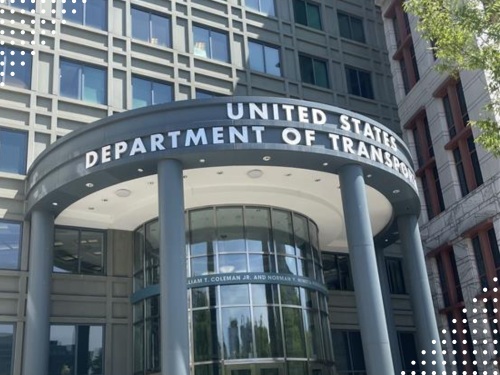The National Highway Traffic Safety Administration estimates that 9,330 people died in traffic crashes in the first three months of 2023; a decrease of about 3.3 percent as compared to 9,645 estimated fatalities during the same time period in 2022.
[Above photo by NTSB]
The agency noted in a statement that this is the fourth straight quarterly decline in traffic fatalities after seven consecutive quarters of year-to-year increases, beginning with the third quarter of 2020.
That projected decrease in traffic fatalities occurred alongside a 2.6 percent increase in vehicle miles traveled or VMT, according to Federal Highway Administration data. As a result, the estimated fatality rate for the first three months of 2023 decreased to 1.24 fatalities per 100 million vehicle miles traveled, down from the projected rate of 1.32 during the same time period in 2022.
NHTSA estimates that for the first three months of 2023, fatalities decreased in 32 states, while increasing in 18 states and Puerto Rico as compared to the same three-month period in 2022.
The agency issued its latest traffic fatality estimates alongside the release of a new report from TRIP, a Washington, D.C.-based transportation research nonprofit, that examines the causes and costs of the surge in U.S. traffic fatalities through 2020 and 2021 during the COVID-19 pandemic – numbers that, while decreasing slightly in 2022, remain at a high level as vehicle travel returns to near pre-pandemic levels.
That new report – entitled “Addressing America’s Traffic Safety Crisis: Examining the Causes of Increasing U.S. Traffic Fatalities and Identifying Solutions to Improve Road User Safety” – not only documents the increase in the number and rate of traffic fatalities from 2019 to 2022 at the national and state levels and examines causes and calculates the cost of both fatal and serious traffic crashes, but also offers a “broad, comprehensive approach” to reducing them.
Meanwhile, in a separate action, NHTSA and the Federal Motor Carrier Safety Administration jointly issued a notice of proposed rulemaking that would require heavy vehicles to have automatic emergency braking or AEB systems that will mitigate the frequency and severity of rear-end crashes.
NHTSA said an AEB system uses multiple sensor technologies that work together to detect a vehicle in a crash imminent situation. The system automatically applies the brakes if the driver has not done so, or, if needed, applies more braking force to supplement the driver’s braking.
The proposed standard would require the technology to work at speeds ranging between low-speed (6 miles per hour) and high-speed (roughly 50 miles per hour) situations. According to agency statistics, there are approximately 60,000 rear-end crashes a year in which the heavy vehicle is the striking vehicle.
Once implemented, NHTSA estimates the proposed rule will prevent 19,118 crashes, save 155 lives, and prevent 8,814 injuries annually.
 Top Stories
Top Stories
USDOT Makes $1.5B Worth of BUILD Grants Available
December 19, 2025 Top Stories
Top Stories

